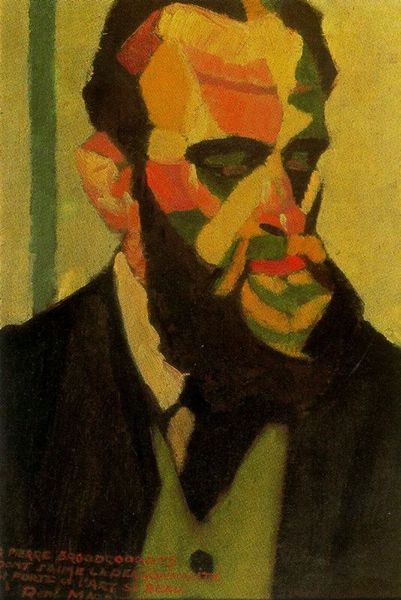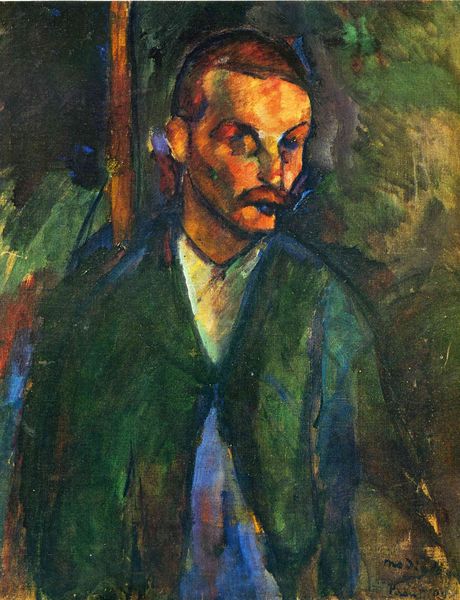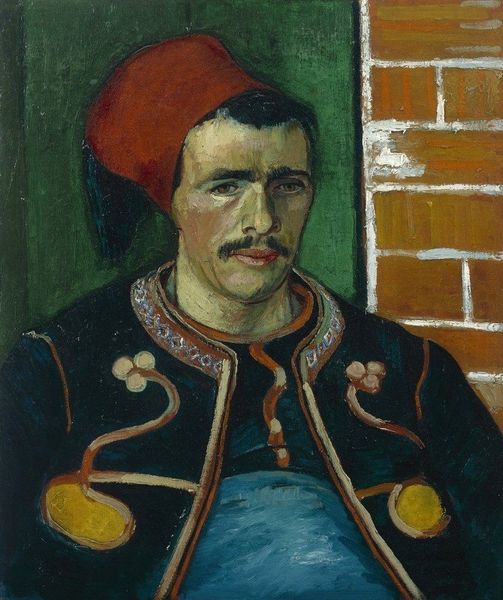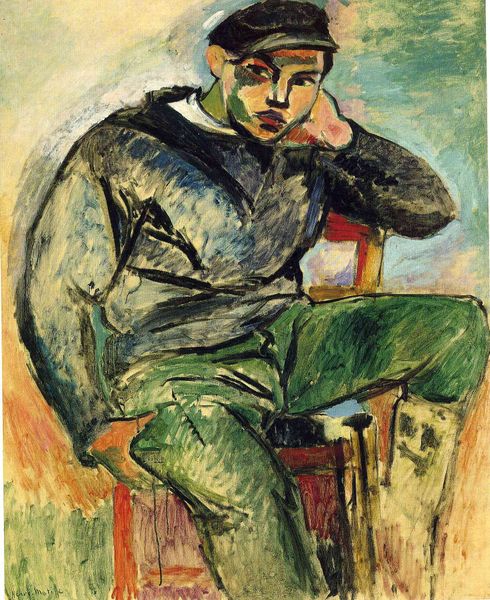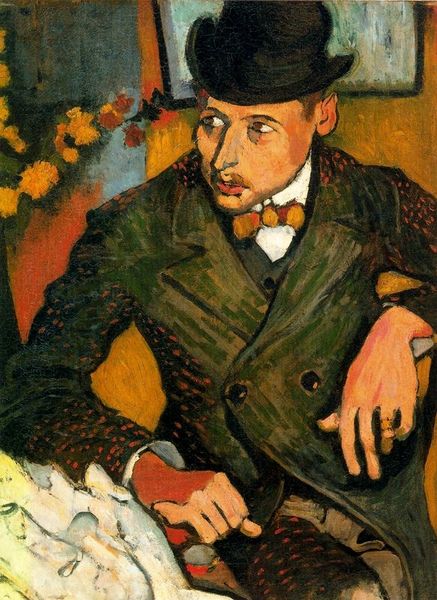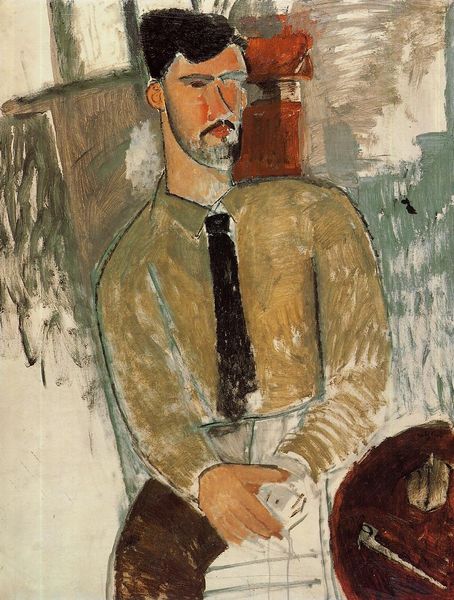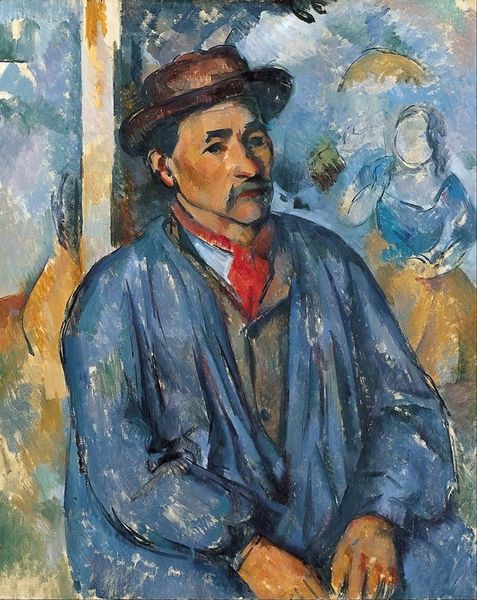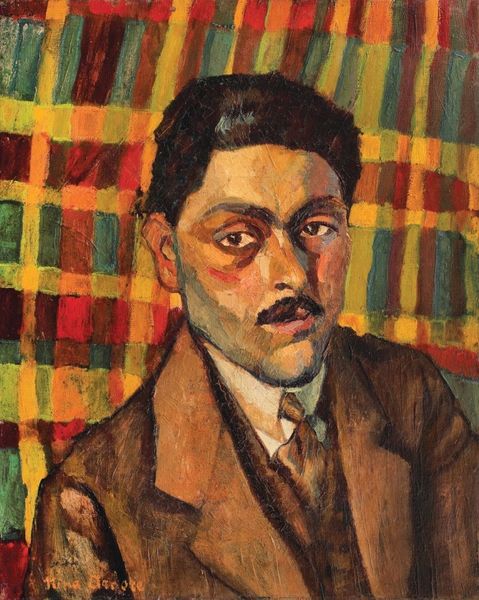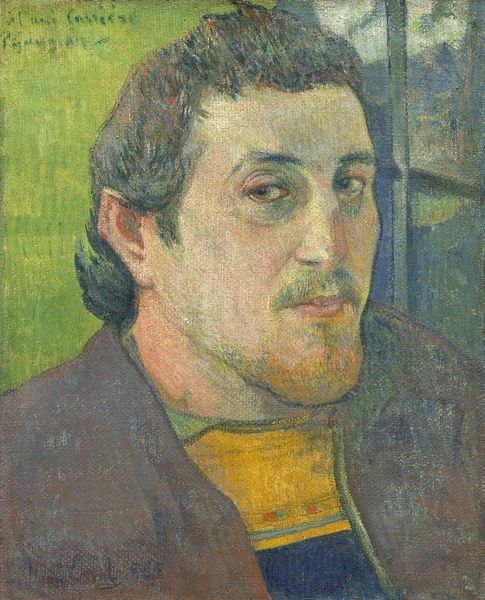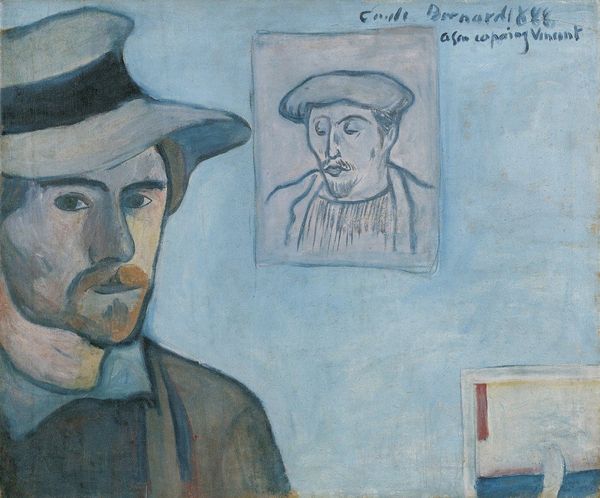
oil-paint, impasto
#
portrait
#
self-portrait
#
oil-paint
#
oil painting
#
impasto
#
famous-people
#
male-portraits
#
intimism
#
symbolism
#
history-painting
#
post-impressionism
Dimensions: 45 x 55 cm
Copyright: Public domain
Curator: Paul Gauguin's 1888 self-portrait, "Self-Portrait with Portrait of Émile Bernard (Les Misérables)," now housed in the Van Gogh Museum, immediately presents us with a compelling image. Editor: There's an unsettling directness to it. The gaze is so intense, almost accusatory, and the colors are jarring; the yellow and those sickly greens create a mood that feels both theatrical and deeply melancholic. Curator: Yes, Gauguin consciously constructs a persona. We see the visual elements of Symbolism at play, not just in color choices, but also in the flattened space, the almost decorative floral pattern on the wall, and the inclusion of his friend Bernard's portrait, positioning himself within a community of artists. Editor: The execution is as vital as what is represented here. One notices the layering of oil paint and how tactile that makes it; these colors exist as textural fields of expressive emotion. It all looks raw, in keeping with how labor intensive oil paintings usually are, though more often this part of its material existence is hidden. Curator: Precisely. He’s deliberately invoking the notion of "Les Misérables", the name given to companion portraits exchanged by Van Gogh and himself at this time. It suggests shared hardship and a sense of being outsiders, but also an implicit artistic brotherhood. The reference evokes themes of suffering and resilience. Editor: So it is less of a natural likeness than a performed identity shaped by socio-political references, and its emotional qualities determined by material acts? The raw pigment, the hurried brushstrokes—those create the image and reinforce this sense of angst we associate with late 19th century artists, misunderstood in their time. Curator: I'd say those acts constitute part of that performed identity and amplify, not determine. His thoughtful compositional choices guide the expressive capabilities that result from those specific applications of material. Gauguin uses impasto—thick layers of paint—to emphasize the emotional weight of the image. Editor: Interesting, I walk away wondering what materials might define me in such terms; beyond this performance of self, I notice now how the artist's intentional choices and manipulation shape and determine the final reading we arrive at, and yet this always stems from something deeply subjective, from the physical toil itself. Curator: For me, this image becomes a lens through which to understand not just an individual, but the cultural and intellectual climate that he consciously inhabited.
Comments
No comments
Be the first to comment and join the conversation on the ultimate creative platform.

